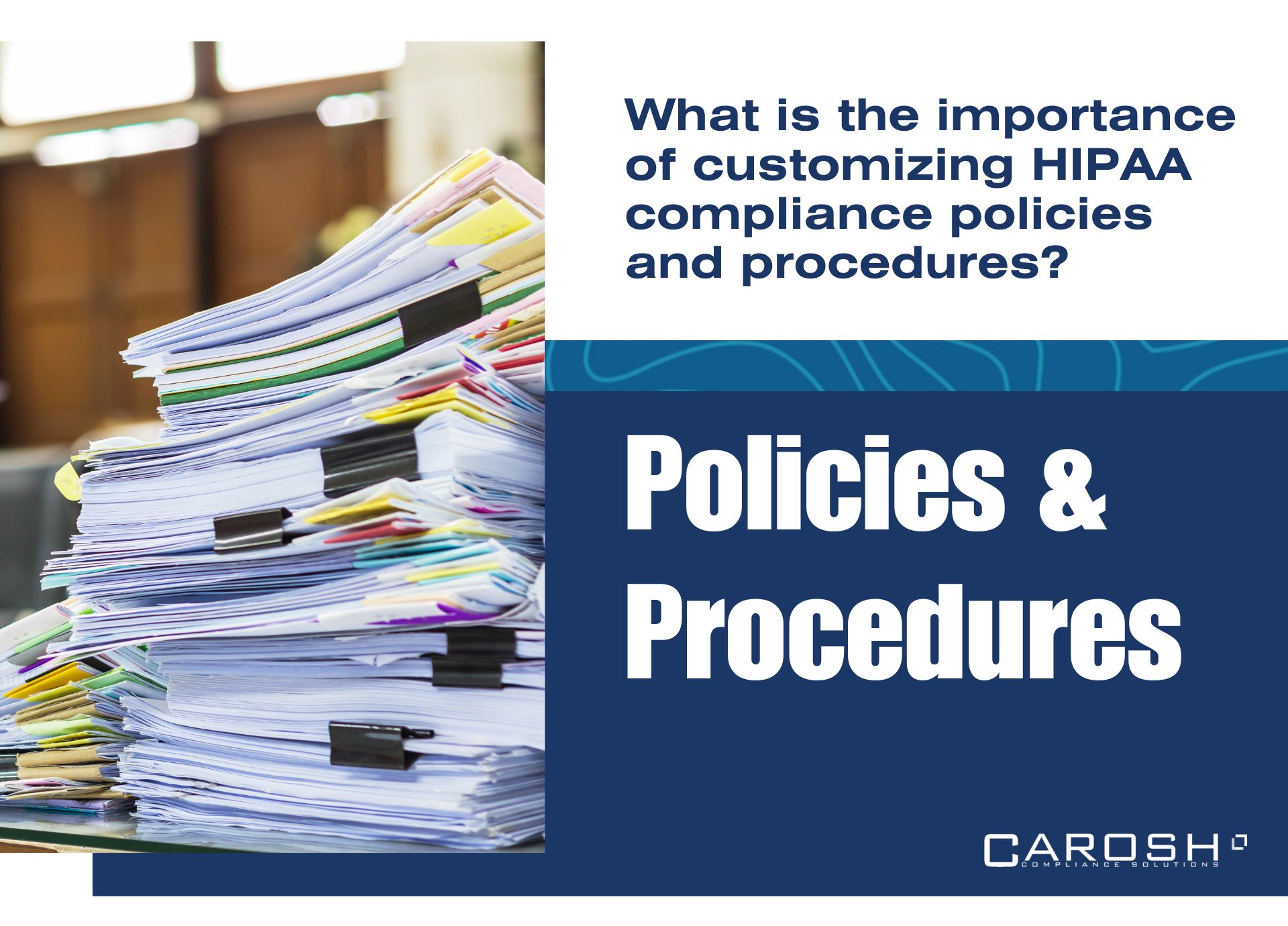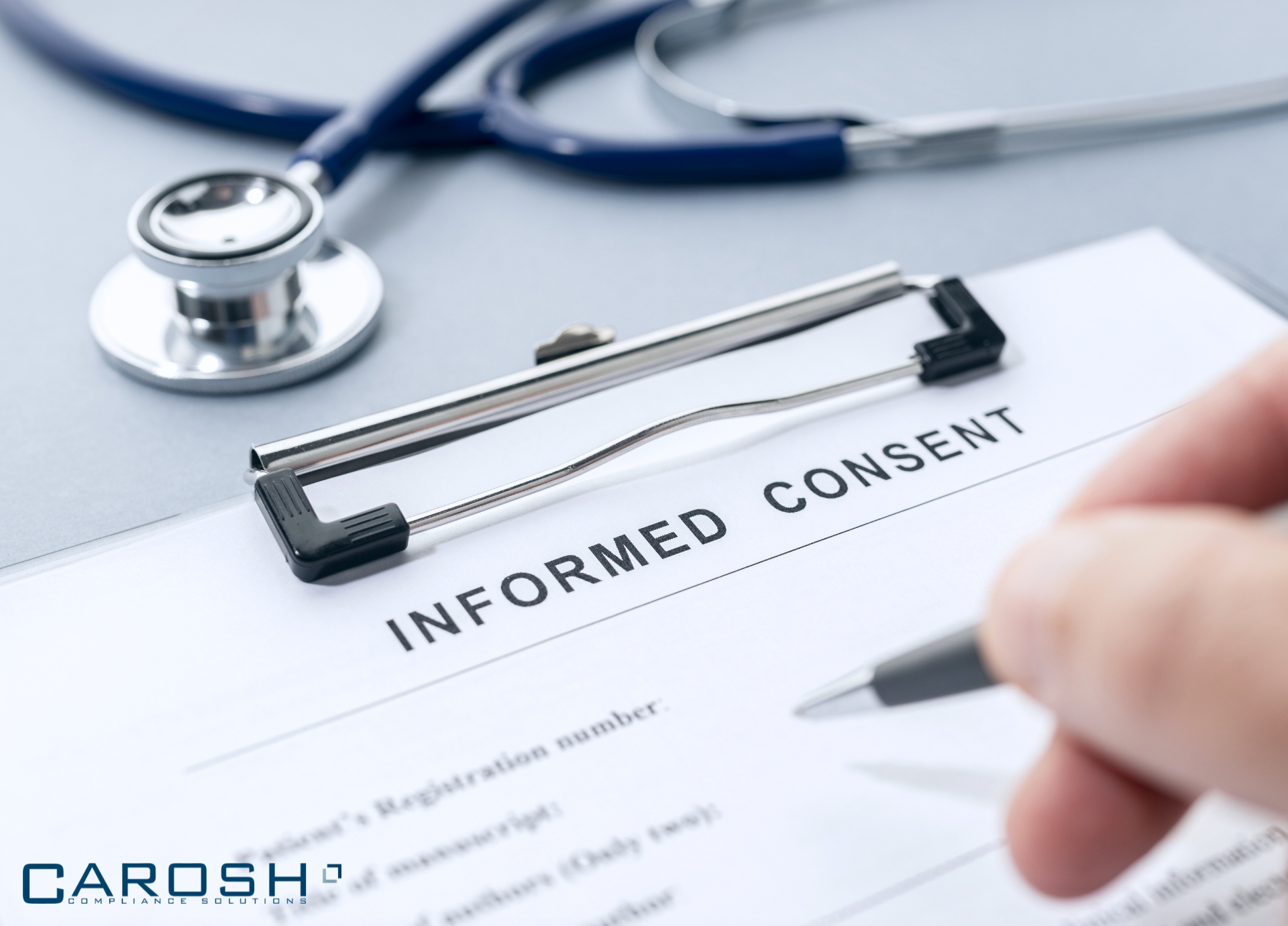
In the complex world of healthcare information management, following the Health Insurance Portability and Accountability Act (HIPAA) is crucial. Healthcare entities and their business associates must develop and implement policies and procedures that form the basis for protecting Protected Health Information (PHI). This comprehensive guide explores the required policies and procedures for HIPAA compliance, emphasizing their importance in maintaining PHI’s confidentiality, integrity, and availability. It covers the need to tailor policies to an organization’s specific needs, along with the importance of regular staff training and awareness programs, providing insights into establishing an effective PHI management framework.
Developing Policies and Procedures
Tailoring policies and procedures to fit a healthcare entity’s unique needs and operations is key to achieving HIPAA compliance. Each organization, whether a small private practice or a large hospital system, handles, stores, accesses, and transmits PHI differently. A universal approach doesn’t work. Customizing policies requires analyzing workflows involving PHI to identify vulnerabilities and creating policies that mitigate these specific risks. This process also involves considering the organization’s patient demographics and the types of healthcare data managed, as these factors affect PHI management and protection.
Moreover, it’s essential to integrate all relevant HIPAA requirements deeply into these customized policies and procedures, beyond just acknowledging the rules. This integration means embedding the principles and specifics of HIPAA into every relevant operation of the organization. For example, the Privacy Rule regulates the permissible uses and disclosures of PHI, protects patient rights such as access to their health information, and specifies when patient authorization is needed for using their PHI. Consequently, policies must provide clear guidelines for staff on handling PHI in various contexts, including treatment discussions, billing processes, and health information exchanges.
Security Rule Compliance
The Security Rule mandates the use of administrative, physical, and technical safeguards to protect the confidentiality, integrity, and availability of electronic PHI (ePHI). Healthcare organizations must develop policies that cover key areas such as employee access to ePHI, data encryption, and cyber threat protection. These procedures must specify actions to safeguard data, including employing secure networks, regularly updating security software, and establishing protocols for data breach responses.
Breach Notification Compliance
Meanwhile, the Breach Notification Rule requires healthcare organizations to establish procedures for responding to PHI breaches. These procedures must guide the investigation and mitigation of breaches and detail the notification process for affected individuals, the Department of Health and Human Services, and sometimes the media, within required deadlines. Policies should lay out the breach assessment process, how to decide on notifications, and how to document the incident and its resolution.
In summary, creating HIPAA compliance policies and procedures demands a customized approach that considers each healthcare entity’s unique characteristics, closely integrated with HIPAA’s comprehensive requirements. This meticulous and strategic method ensures that organizations not only meet legal requirements but also maintain the trust and confidentiality at the heart of patient care.
Privacy Rule Compliance
Compliance with the Privacy Rule under HIPAA mandates the development of clear and comprehensive policies and procedures on the use and disclosure of Protected Health Information (PHI). It’s crucial that these policies detail the circumstances under which PHI may be utilized and shared, striking a balance between the necessity for efficient healthcare delivery and the need to protect patient privacy.

Specifying Permissible Uses Without Consent
The policies must specify instances where sharing PHI without patient consent is permissible, typically for patient treatment, payment, and essential healthcare operations like quality assessment, performance evaluation, and training programs. For example, healthcare providers sharing information for treatment or billing PHI to insurance companies are practices that fall under these exceptions. These policies aim to clarify these permissible uses to staff, guiding them on when PHI sharing does not require explicit patient authorization.
Outlining Scenarios Requiring Patient Authorization
Conversely, these policies need to outline scenarios where patient authorization is mandatory for using or disclosing PHI. This requirement generally pertains to uses outside of treatment, payment, or healthcare operations, such as research, marketing, or disclosures to third parties not directly involved in care. The authorization process should be straightforward, adhering to HIPAA standards and ensuring patients are well-informed about their consent.
Championing Patient Rights Under HIPAA
Additionally, procedures must robustly champion patient rights under HIPAA, including access to PHI, amendments to their health records, and an accounting of disclosures. These patient-centric procedures guarantee that individuals can effortlessly exercise their rights within HIPAA’s stipulated timeframes.
Enforcing the ‘Minimum Necessary’ Standard
Furthermore, policies must enforce the ‘minimum necessary’ standard, ensuring only the essential amount of PHI needed for a specific purpose is used or disclosed. This standard, which applies to most uses and disclosures except in treatment scenarios, necessitates evaluating the necessary information for a task and restricting access to minimize PHI exposure.
In essence, establishing policies and procedures around PHI usage and disclosure, respecting patient rights, and adhering to the ‘minimum necessary’ standard are pivotal for HIPAA compliance. By delineating these guidelines and integrating them into daily operations, healthcare entities promote a culture of compliance and trust, foundational for the integrity and efficacy of patient care services.
Security Rule Compliance
Complying with the HIPAA Security Rule necessitates the implementation of administrative, physical, and technical safeguards, collectively establishing a formidable defense mechanism for the protection of Protected Health Information (PHI). These safeguards are the cornerstone of HIPAA compliance, ensuring that PHI is shielded from a multitude of security risks and adheres to HIPAA’s exacting standards.
Administrative Safeguards
Administrative safeguards focus on the establishment and enforcement of policies and procedures that regulate how the workforce handles PHI. Key among these is the execution of regular risk assessments and management strategies, aimed at identifying and mitigating potential security threats to PHI. Another critical component is workforce training and management, which ensures that all staff members are knowledgeable about HIPAA regulations as well as the organization’s specific privacy and security protocols. Moreover, the formulation of contingency plans is an essential element of administrative safeguards, designed to prepare for and respond to emergencies or disasters that could compromise PHI’s integrity and availability. These plans often include data backup procedures, disaster recovery strategies, and the continuity of critical functions in times of crisis.
Physical Safeguards
Physical safeguards are centered around the protection of PHI’s physical storage and access. Implementing controls to restrict physical access to PHI storage areas is paramount, utilizing mechanisms like key cards, biometric scanners, and security personnel. Equally important is the protection of workstations and electronic devices that access PHI, incorporating security measures such as automatic locking mechanisms, screen privacy filters, and policies for secure mobile device storage to prevent unauthorized access.
Technical Safeguards
Technical safeguards, meanwhile, involve the application of technology and policy to secure and control access to PHI. This includes access controls that ensure only authorized individuals can access PHI, employing unique user IDs and passwords. Encrypting PHI, both at rest and in transit, plays a vital role in rendering it unreadable to unauthorized parties. Securing the transmission of PHI over electronic networks is also crucial, often through the use of Virtual Private Networks (VPNs) or secure email systems to protect the data’s confidentiality and integrity while in transit.
The integration of administrative, physical, and technical safeguards under the HIPAA Security Rule offers a holistic approach to the protection of PHI. By embracing these layered and interconnected security measures, healthcare entities not only safeguard patient information but also reinforce their commitment to the highest standards of data security and privacy. This comprehensive strategy is instrumental in maintaining patient trust and fulfilling the stringent requirements mandated by HIPAA, showcasing an unwavering dedication to the privacy, security, and integrity of PHI.
Breach Notification Rule
Establishing clear and effective breach response procedures is vital for HIPAA compliance and for effectively managing and mitigating the impact of breaches involving Protected Health Information (PHI). These procedures are crucial for ensuring a quick and coordinated response to any incidents where PHI is compromised. Initially, the procedures should lay out a clear process for breach identification, which involves promptly detecting any unauthorized access, use, disclosure, or loss of PHI. Following the identification, the focus shifts to containment to limit the breach’s scope and impact. This might include actions such as securing affected systems, halting unauthorized practices immediately, or addressing vulnerabilities.
Investigation and Assessment
The next critical step involves a thorough investigation once the breach is contained. This investigation aims to determine the breach’s cause, the extent of affected PHI, and the potential harm to individuals whose data has been compromised. It should be systematic and comprehensive, aiming to uncover the root cause of the breach and compile all necessary information to aid in future prevention and response strategies.
Notification Protocols
An essential component of the breach response is the clear protocol for notifying all relevant parties. This includes outlining how and when to notify affected individuals, the Department of Health and Human Services (HHS), and sometimes the media, depending on the breach’s severity. Notifications must be timely, typically requiring that affected individuals be informed without unreasonable delay and no later than 60 days after discovering the breach. These notifications should provide details about the incident, the types of PHI involved, advice on how individuals can protect themselves from potential harm, and the steps the organization is taking in response to the breach. In cases where the breach affects a significant number of individuals or poses a high risk of harm, media notifications can help ensure that all affected parties are promptly informed.
Upholding HIPAA Regulations Through Effective Response
In essence, crafting comprehensive breach response procedures and notification protocols is critical for organizations handling PHI. These procedures facilitate an organized and effective response to breaches, aiming to minimize damage, restore trust, and uphold HIPAA regulations. Beyond being a regulatory mandate, these procedures underscore an organization’s dedication to safeguarding the privacy and security of patient information.
Training and Awareness Policies and Procedures
Training and awareness stand as the foundation of HIPAA compliance, crucial for ensuring every employee within a healthcare organization is thoroughly versed and committed to following HIPAA regulations and the organization’s specific privacy and security measures. Essential to this is the development of comprehensive training programs that engage employees not only at the start of their employment but continually throughout their careers. This training must cover an extensive review of HIPAA regulations, including both the Privacy and Security Rules, and be tailored to the varied roles and responsibilities found within the organization. Tailoring ensures every team member understands how HIPAA impacts their daily activities and the best practices for protecting patient information.

Interactive and Updated Training Programs
Creating training programs that are interactive and engaging is vital, using a mix of workshops, e-learning modules, and interactive discussions to cater to diverse learning styles. It’s also imperative that these training programs are regularly refreshed to mirror any changes in HIPAA regulations or shifts in organizational processes and technology adoption. This continuous educational effort keeps the staff current and skilled in the secure management of Protected Health Information (PHI).
Reinforcement Through Awareness Campaigns
In addition to structured training, running awareness campaigns plays a significant role in bolstering a HIPAA compliance culture within the organization. Utilizing updates, newsletters, posters, and meetings can keep the essence of HIPAA compliance ever-present in employees’ minds. These campaigns aim to persistently remind staff of the significance of compliance, incorporating the latest regulatory changes, insights from industry-wide compliance challenges, and best practices for PHI protection.
Cultivating a Culture of Privacy and Security
Ultimately, training and awareness initiatives transcend merely ticking off a regulatory requirement; they endeavor to foster a culture where every team member values patient privacy and security. Ensuring continuous training and regular reminders of their role in HIPAA compliance enables healthcare organizations to elevate their PHI management and protection strategies. This dedication not only upholds patient trust but also maintains the integrity of the healthcare system.
If your organization seeks further education on HIPAA compliance, Carosh offers a variety of training tailored to specific needs and areas requiring strengthening within the context of HIPAA compliance.
Regular Review and Updates Policies and Procedures
In the ever-evolving realms of healthcare and data protection, continuously evaluating and updating policies and procedures is critical for healthcare organizations to remain compliant with HIPAA. This ongoing process ensures that organizational practices are in line with the latest HIPAA regulations, technological innovations, and shifts in healthcare delivery methods. Regularly revising policies and procedures goes beyond meeting a regulatory requirement; it is a proactive approach to safeguarding Protected Health Information (PHI).
Adapting to Changes in Regulations and Technology
As HIPAA regulations evolve to address new privacy challenges, technological advancements, and changes in healthcare practices, organizations need to stay vigilant and adaptable. Updates to policies and procedures might be necessitated by amendments to HIPAA rules, new guidance from regulatory bodies, or the emergence of cybersecurity threats. Furthermore, the adoption of new healthcare technologies, such as telemedicine and electronic health records (EHRs), requires that policies and procedures be updated to tackle the specific privacy and security challenges these innovations present.
Conducting Regular Audits and Assessments
A key method for assessing the effectiveness of an organization’s HIPAA compliance efforts is through regular audits and assessments. Both internal and external audits provide a thorough analysis of adherence to established policies and HIPAA regulations, identifying potential vulnerabilities and areas for improvement. These evaluations offer critical insights that help enhance privacy and security measures.
Internal audits allow for ongoing monitoring and timely issue identification, while external audits can provide an independent perspective, often revealing insights that may be overlooked internally. They can also compare the organization’s practices against industry standards.
Utilizing Insights for HIPAA Compliance Strategy Refinement
The insights gained from these audits and assessments are invaluable for refining an organization’s HIPAA compliance strategies. Not only do they address immediate compliance concerns, but they also contribute to the overall improvement of processes and strategies for managing PHI.
Ensuring Continuous Protection of Patient Information
The cycle of evaluating and updating policies, coupled with comprehensive audits and assessments, forms a thorough approach to HIPAA compliance. By adjusting dynamically to changes in regulations, technological advancements, and shifts in healthcare delivery—and rigorously evaluating compliance efforts—healthcare organizations can consistently protect patient information. This dedication to privacy and security is crucial for maintaining patient trust and the integrity of the healthcare system. For access to the most up-to-date policies and procedures, Carosh’s website offers downloadable versions. Click here to view the latest updates.

Documentation and Recordkeeping Policies and Procedures
Accurate and comprehensive record-keeping stands as a critical component in managing HIPAA compliance within healthcare organizations. This process involves the detailed documentation of all HIPAA-related activities, including the creation and revision of policies and procedures, conducting training sessions, outcomes of audits, instances of Protected Health Information (PHI) breaches, and risk assessments conducted. Such meticulous documentation fulfills dual objectives: it demonstrates the organization’s commitment to compliance during external audits or investigations and serves as an invaluable historical reference for future policy adjustments, training enhancements, and risk management strategies.
Documenting Compliance Evolution
Documenting the development and updates of HIPAA policies and procedures chronicles the evolution of an organization’s compliance strategy, shedding light on adjustments made in response to changing regulations, technological advancements, or shifts in healthcare delivery methods. Training records are equally vital, showcasing efforts to educate the workforce on HIPAA regulations and the organization’s specific privacy and security practices. These records detail the content of training, attendees, and the frequency of the training sessions.
Significance of Audits and Breach Records
The significance of detailed records in the context of audits and breaches cannot be overstated. Audit documentation should cover the audit’s scope, findings, recommended improvements, and any corrective actions taken by the organization. Similarly, records of PHI breaches should comprehensively document the breach’s nature, the response to it, measures taken to mitigate its impact, and lessons learned to prevent future incidents. Risk assessment documentation also plays a critical role, providing insights into potential vulnerabilities and the actions taken to address them, forming an integral part of the organization’s risk management strategy.
Accessibility and Clarity of Documentation
Furthermore, ensuring that documentation is easily accessible to all staff members is essential. Policies and procedures should be not only thorough and up-to-date but also readily available to staff, aiding them in consulting these documents as necessary to guide their daily decisions and actions. The clarity of the documentation is crucial, ensuring that all employees, regardless of their HIPAA regulation expertise or familiarity, can comprehend and adhere to the guidelines. This might involve digital access through an internal network, distributing physical copies, or other methods suited to the organization’s operational needs and culture.
Foundation of a Strong HIPAA Compliance Program
Ultimately, diligent record-keeping of all HIPAA-related activities and ensuring the easy accessibility of policies and procedures lay the groundwork for a robust HIPAA compliance program. These practices not only promote regulatory compliance but also contribute to establishing a culture of compliance and awareness within the organization. This culture is crucial for protecting patient information and maintaining the essential trust required to provide healthcare services effectively.
Compliance with State Laws
Navigating the complex interplay between federal and state regulations is a crucial aspect of healthcare compliance. The Health Insurance Portability and Accountability Act (HIPAA) sets the federal standard for the protection of Protected Health Information (PHI), yet healthcare organizations must also recognize that state laws may enforce stricter requirements. Therefore, in addition to adhering to HIPAA standards, healthcare entities must ensure their policies and procedures comply with any applicable state laws regarding PHI.
Achieving Dual Compliance
Achieving compliance with both federal and state regulations require a comprehensive understanding of HIPAA and the specific privacy laws of the states in which the organization operates. Sometimes, state laws provide stronger privacy protections than HIPAA or impose unique requirements for reporting data breaches, such as necessitating quicker breach notifications or defining PHI more broadly than HIPAA.
Analyzing State Privacy Laws
To effectively navigate this complex regulatory environment, healthcare organizations typically conduct a detailed analysis of relevant state privacy laws. This process often includes working with legal experts who specialize in healthcare law to identify areas where state laws differ from or exceed HIPAA requirements. Once these variances are identified, organizations must adjust their policies and procedures to achieve full compliance.
Practical Adjustments for Compliance
This adjustment might mean adopting the strictest standards across the organization. For instance, if a state law mandates a higher level of encryption for PHI than what HIPAA requires, an organization might choose to apply this stricter standard universally. Alternatively, organizations could customize their policies and procedures to meet the specific requirements of each state, though this approach can be more complex to manage, especially for entities operating across multiple states.
Ensuring Alignment with HIPAA and State Regulations
Aligning policies and procedures with both HIPAA and state-specific regulations is essential for healthcare organizations. This dual compliance approach not only meets federal standards but also addresses any additional protections required by state law. By carefully balancing these requirements, healthcare entities can provide the most comprehensive protection for patient data, ensuring regulatory compliance and maintaining the trust of patients and the public.
Business Associate Management
Effectively managing and overseeing business associates is crucial in the landscape of HIPAA compliance. Business associates, or third-party service providers who deal with Protected Health Information (PHI) on behalf of healthcare organizations, play a significant role in the processing and handling of sensitive patient data. To ensure these associates comply with HIPAA standards, healthcare entities need to establish thorough policies.
Creating Business Associate Agreements (BAAs)
A fundamental aspect of managing business associates is the creation and enforcement of Business Associate Agreements (BAAs). These contracts are vital, outlining the relationship between a healthcare entity (the covered entity) and its business associates. BAAs detail the responsibilities and obligations of business associates regarding PHI protection and compliance with HIPAA’s privacy and security rules. This includes specifying permissible uses and disclosures of PHI, required protective measures, and necessary actions in the event of a data breach.
Continuous Oversight and Compliance Monitoring
Beyond establishing BAAs, healthcare organizations must also engage in continuous oversight of their business associates. This means routinely reviewing and monitoring their practices to ensure ongoing HIPAA compliance. Such oversight could involve audits, periodic reviews of service agreements, and evaluations of the associates’ data security protocols. It’s also important for healthcare organizations to keep abreast of any operational changes among their business associates that might impact PHI handling.
Addressing Non-Compliance
Should instances of non-compliance arise, effective management includes having strategies to address these issues. Actions might range from renegotiating BAA terms to offering further training or even contract termination if compliance cannot be guaranteed.
Critical Role in HIPAA Compliance Policies
Incorporating business associate management into a healthcare organization’s HIPAA compliance policies is critical. It ensures that every entity involved in managing PHI, not just the covered entities but also their third-party partners, upholds a commitment to patient data protection. By rigorously managing these relationships and ensuring adherence to BAAs, healthcare organizations can extend their HIPAA compliance efforts, securing patient information throughout their operational network.
Establishing detailed policies and procedures is essential for upholding HIPAA compliance within healthcare organizations. These guidelines not only facilitate legal conformity but also nurture a culture of privacy and security, which is vital for maintaining patient trust in the healthcare system. Regularly revising these policies to align with changes in HIPAA regulations and technological advancements is key to ensuring ongoing compliance. Moreover, extensive training and awareness initiatives are crucial for embedding these practices among staff, thus bolstering the management of PHI. Through careful development and maintenance of these policies and procedures, healthcare entities can adeptly manage HIPAA compliance, ensuring the highest level of patient information protection and upholding the integrity of healthcare services.
Q&A Section
Q: What is the importance of customizing HIPAA compliance policies and procedures?
A: Customization is crucial because every healthcare entity has unique ways of handling, storing, accessing, and transmitting Protected Health Information (PHI). Tailoring policies and procedures to specific operational needs ensures that all aspects of PHI management are adequately addressed, enhancing the effectiveness of HIPAA compliance.
Q: How should policies address the use and disclosure of PHI?
A: Policies must clearly define permissible uses and disclosures of PHI, specifying scenarios where patient consent is not required (like treatment or billing) and situations where authorization is necessary. This clarity helps staff understand their boundaries and responsibilities in handling PHI.
Q: What should procedures for patient rights under HIPAA include?
A: Procedures should facilitate patients’ rights to access their PHI, request amendments to their health records, and receive an accounting of disclosures. Ensuring these rights upholds patient autonomy and complies with HIPAA’s Privacy Rule.
Q: Why are regular training programs and awareness campaigns necessary in HIPAA compliance?
A: Regular training ensures that all employees are up-to-date on HIPAA regulations and understand the organization’s specific privacy and security practices. Awareness campaigns reinforce the importance of HIPAA compliance, keeping it a constant focus in the organization.
Q: What role do audits and assessments play in HIPAA compliance?
A: Regular audits and assessments help in evaluating the effectiveness of HIPAA compliance efforts. They identify gaps or weaknesses in privacy and security measures, providing insights for improvements and ensuring ongoing adherence to HIPAA standards.
Q: Why is maintaining accurate records of HIPAA-related activities important?
A: Accurate record-keeping demonstrates compliance efforts during external audits or investigations and provides a historical reference for policy modifications, training enhancements, and risk management. It’s crucial for tracking the evolution of HIPAA compliance practices.
Q: How do state-specific regulations impact HIPAA compliance policies?
A: In addition to HIPAA, healthcare entities must comply with state laws that may impose more stringent requirements on PHI. Policies and procedures need to accommodate these state-specific regulations to ensure full legal compliance.
Q: What should policies include regarding business associate management?
A: Policies should ensure effective management of business associates, including having Business Associate Agreements (BAAs) in place. These policies must ensure that associates comply with HIPAA standards, providing mechanisms for regular oversight and management.




